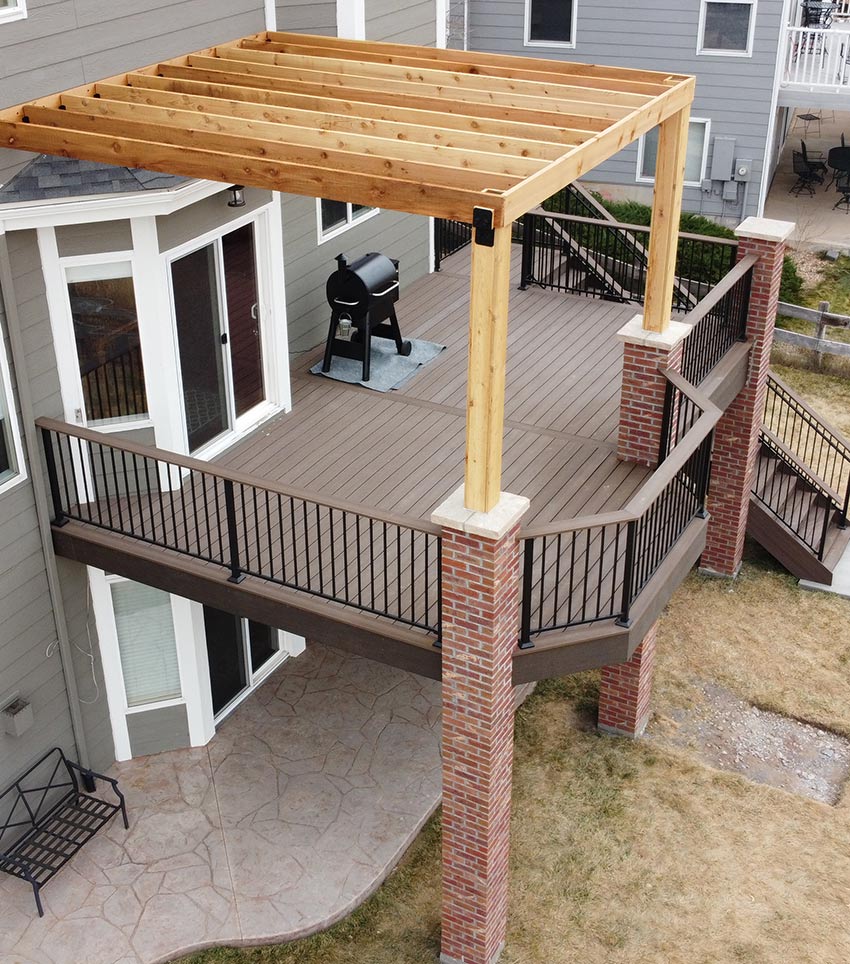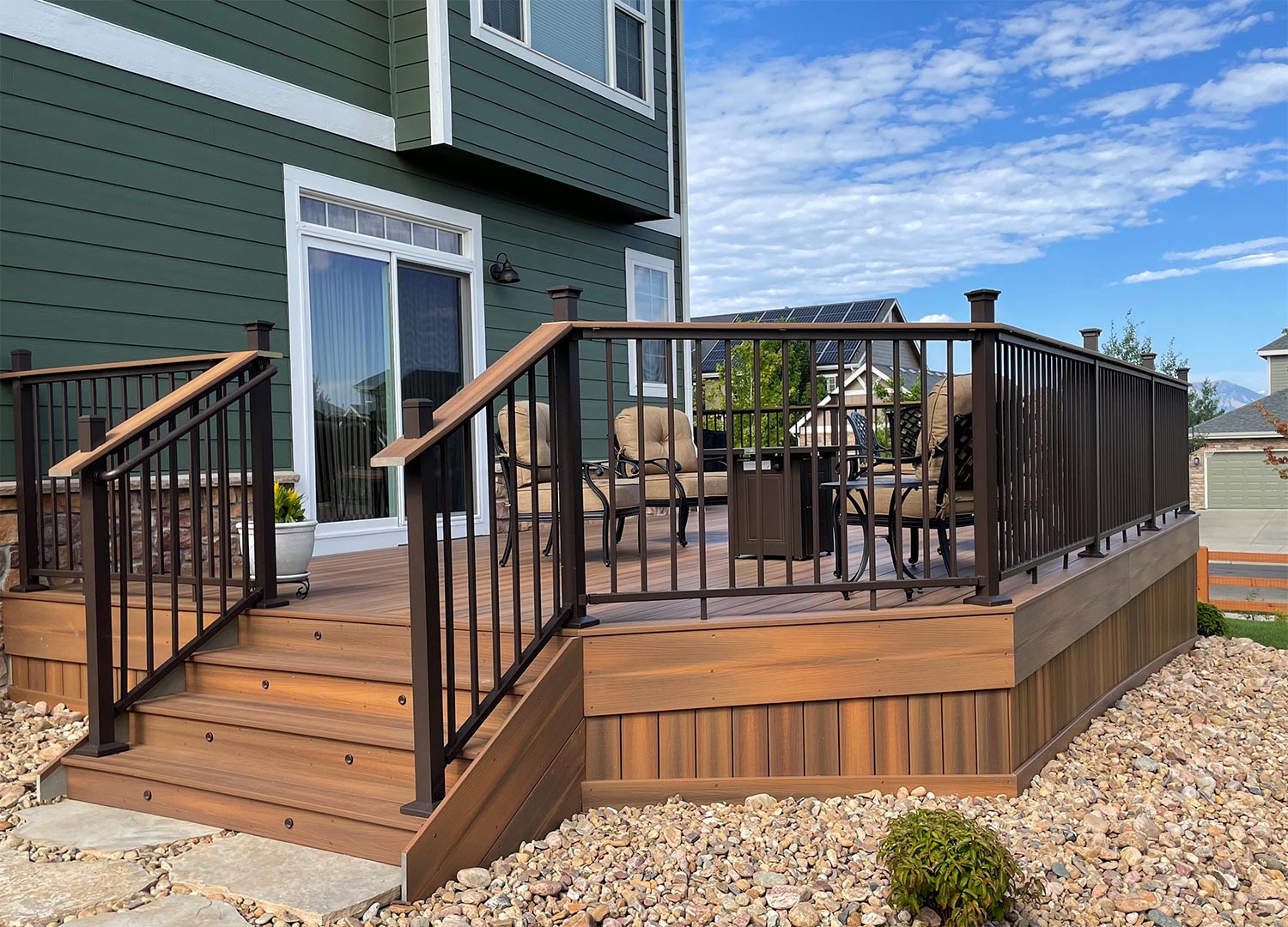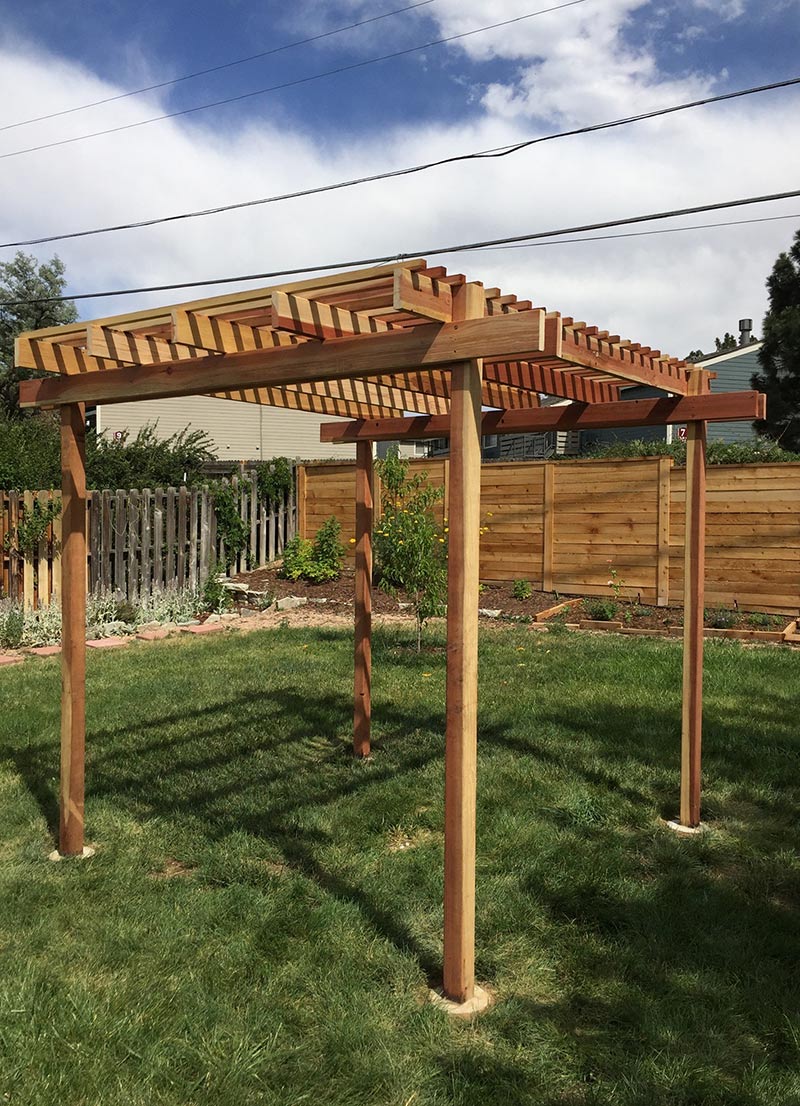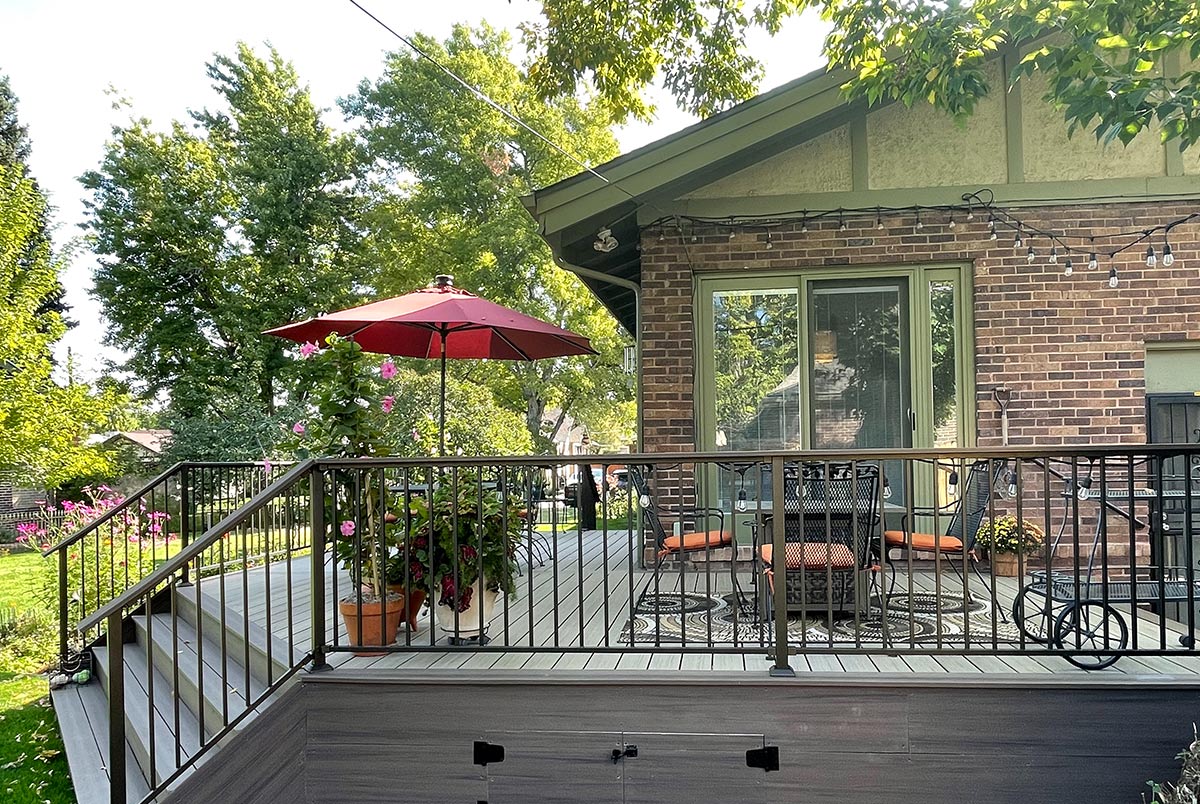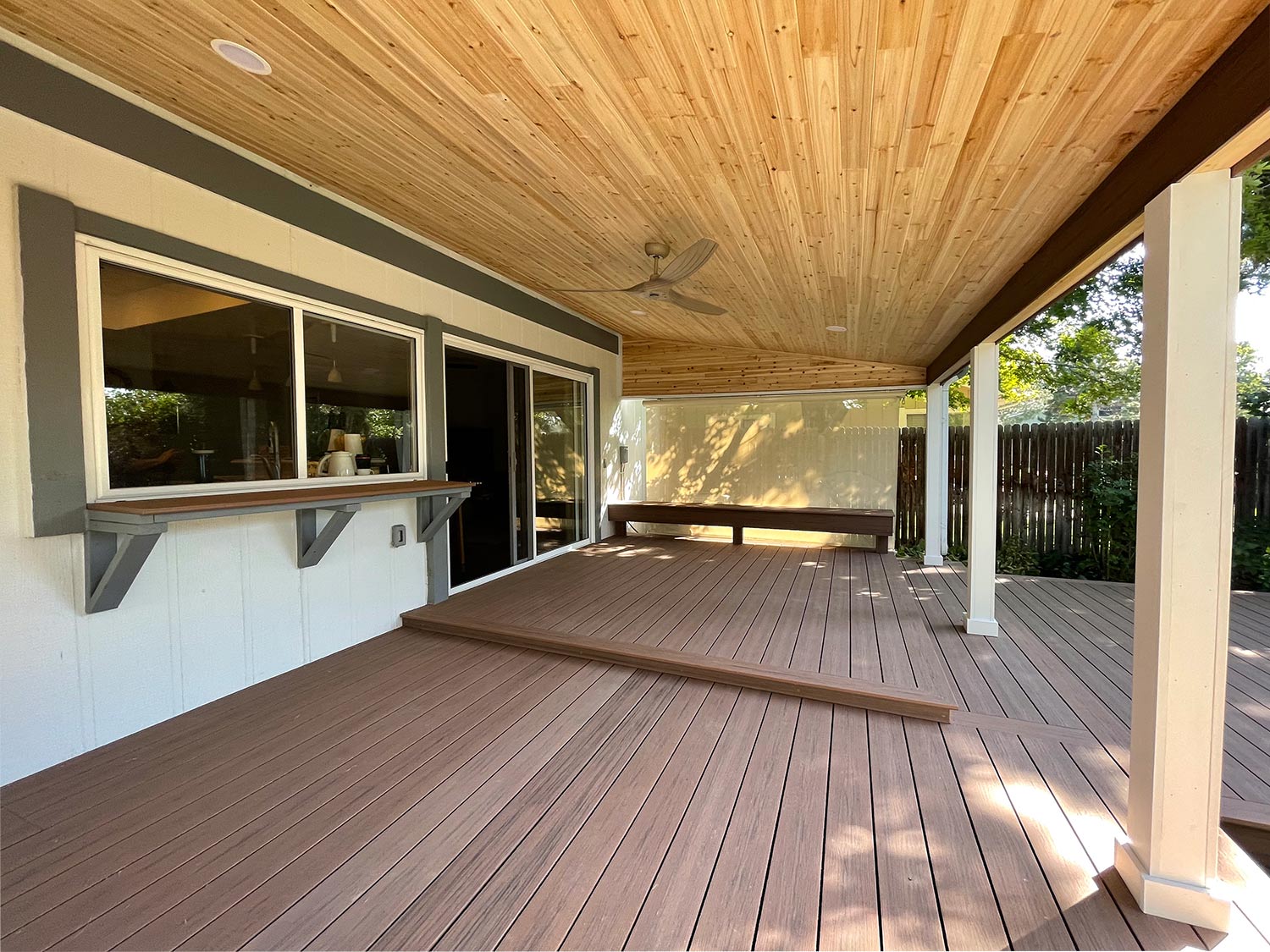Before diving headfirst into deck daydreams, there’s a crucial step that’s sometimes overlooked: calculating the budget. Building a deck can be a significant investment, and proper budgeting ensures you get the most for your money. This article will explore the importance of cost calculation for your deck project, and offer you a tool to estimate the budget for the outdoor space of your dreams.
What factors are typically considered in calculating the price of a deck?
From the size of the structure to the type of materials used, every detail matters when calculating the price of a deck. Labor costs, permits, location considerations, design complexity, and any additional features all play a role in determining the overall budget for your project. By carefully evaluating these factors, including the cost of materials, you can get a better understanding of what it will take to bring your outdoor oasis to life.
Why Calculating the Budget Matters
So, you’ve envisioned the perfect deck or patio for your backyard – a sprawling entertaining haven or a cozy nook for morning coffee. But without a budget in mind, it can be difficult to know how realistic your vision is. Here’s why calculating the cost is essential:
Realistic expectations:
Budgeting helps you manage expectations and avoid sticker shock. It ensures you plan a project that aligns with your financial capabilities. By understanding the various factors that influence deck pricing, you can approach your project with clarity and foresight. From materials to labor costs and design complexity, each element contributes to the overall budget. A proactive approach not only helps in setting realistic expectations but also ensures that your vision for the perfect outdoor space aligns with your financial boundaries. Estimating the budget isn’t just a preliminary step – it’s a necessary foundation to turn your deck dreams into a tangible reality.
Informed decisions:
Knowing your budget puts you in the driver’s seat when it comes to building your dream deck. It’s all about prioritizing your must-haves. Looking for a luxurious, low-maintenance deck? Maybe a smaller footprint with top-of-the-line composite materials is the way to go. On the other hand, if space is your priority, a larger deck built with a lower grade material could free up funds. Taking a step-by-step approach to calculating costs ensures you can blend your creative vision with some financial savvy. Every element, from the materials you choose to the intricate design details, comes together to create a deck that reflects both your style and your wallet’s comfort level.
Avoiding budget surprises:
Hidden costs can derail your project. By calculating and factoring in potential expenses upfront, you’re less likely to encounter unexpected financial hurdles. With informed decisions driven by a clear budget, you gain the ability to begin designing a deck tailored to your preferences. It will be important to prioritize features that are the most important to you and your family. This type of strategic approach allows for the difficult decision to be made quickly.
Financial planning:
Building a deck impacts your overall financial picture. Factoring in costs helps you adjust your budget and potentially secure financing if needed.
Breaking Down the Budget:
Understanding the various cost components ensures a more accurate calculation. Here’s a breakdown of the key factors that impact your deck price:
- Size: This is the biggest factor. A larger project naturally requires more materials and labor, leading to a higher overall cost.
- Materials: Materials can vary widely in price. Treated lumber is a cost-effective option, while composite materials offer lower maintenance but come with a higher price tag. Railing styles and additional features also influence the cost.
- Labor: The complexity of the design, local labor rates, and the experience of the contractor will impact the cost of construction.
- Permits and Inspections: Obtaining necessary permits and passing inspections add to the overall cost.
- Demolition: If you have an existing structure to be removed, factor in demolition costs.
- Additional Features: Stairways, built-in seating, lighting, and other features add to the final price.
Regional Pricing: How Location Impacts Bdget
Now, let’s delve into the world of regional pricing. The cost of building can vary significantly depending on where you live. Here’s how location plays a role:
- Material Costs: Transportation costs can affect material prices. Lumber might be more expensive in remote areas compared to urban centers with easy access to lumberyards.
- Labor Costs: Labor rates vary widely across the country. Building costs will be higher in areas with a high cost of living and a high demand for skilled labor.
- Local Regulations: Some areas have stricter building codes or require specific permits, adding to the cost.
- Availability of Materials: Certain materials may be more readily available in specific regions, impacting overall cost.
Understanding Regional Variations:
Here’s a quick glimpse at how geography can impact pricing:
- Coastal vs. Inland: Pressure-treated lumber might be more economical in coastal regions due to easier access to wood sources. Conversely, composite materials might be more readily available and competitively priced in inland regions.
- Urban vs. Rural: Labor costs are typically higher in urban areas compared to rural areas.
- Climate Considerations: In areas with harsh winters, you might need to factor in the cost of winterizing your deck, which could involve using specific materials or implementing winter protection measures.
Tips for Calculating Your Decking Costs
Equipped with the knowledge of cost components and regional variations, let’s explore some tips to calculate your deck costs effectively:
- Research Materials: Get an understanding of the types of materials that work well here in the Denver climate. It’s also important to take in to consideration things like fasteners, joist tape, and other factors that go in to the structure that aren’t top of mind.
- Gather Local Data: Ask your neighbors what they paid for their deck construction and what they think of the qulity and professionalisim of the contractor that built it.
- Consult with The Deck Company: Schedule an on-site estimate with The Deck Company to get specific quotes based on your desired design and materials. Don’t hesitate
How material impacts price: composite, cedar, redwood and IPE
The materials you choose for your outdoor living space are like the ingredients in a recipe – they can make or break the final cost and aesthetic. Lumber is a classic choice, offering affordability and a natural look. However, it requires regular maintenance like staining or sealing. Composite materials, on the other hand, come in a wider variety of colors and textures, and require minimal upkeep. While they offer a premium look and feel, they also come with a premium price tag.
Think of it like this: treated lumber is your trusty workhorse, reliable and budget-friendly. Composite materials are the gourmet ingredients, offering a luxurious, low-maintenance experience but at a higher cost. Other factors like railings, built-in seating, and even the type of fasteners you use can all add up. The key is to prioritize your needs and wants. Do you crave a low-maintenance haven or a rustic retreat? By understanding how materials impact the price, you can create an outdoor space that reflects your style and budget perfectly.
To get a better understanding of the differences in look, feel and function of composite materials, we suggest you visit the following manufacturers websites:
How to use this deck cost calculator
We created this deck price calculator to help you get a rough idea around cost.
Please enter the estimated sq footage of your space and the type of material you are considering. Don’t worry, the substructure cost has Once you have that completed, enter the linear feet of railing you’ll need. Don’t forget to include railings for any stairs. This should give you an rough ballpark estimate of what your project could cost.
This deck price estimate calculator is based on current industry pricing, as a result is subject to change at any time, without notice.
Are deck cost calculators accurate in estimating the total cost?
Deck price calculators provide a rough estimate of the total cost, factoring in materials, dimensions, and other variables. While they are a useful starting point, variations in labor costs, material quality, and unforeseen expenses mean the final price may differ from the calculator’s estimate. Our goal is to offer homeowners an idea of what an outdoor space would cost, so they can determine if the economics make sense.
How much wood is needed for a 12×12 deck?
For a 12×12 deck, you would typically need around 288 linear feet of deck boards if using 6-inch wide boards. This calculation is based on covering the area of the deck with boards running parallel to the long side, considering standard deck construction practices.
